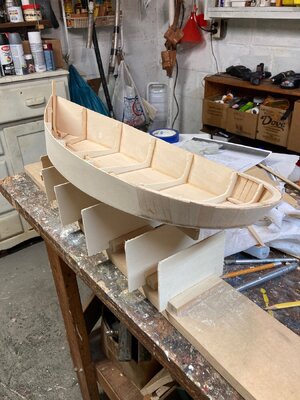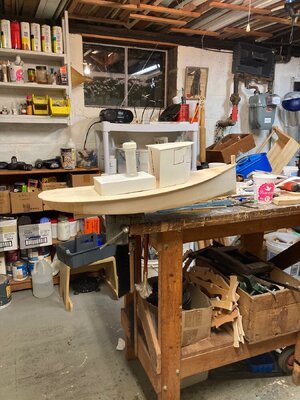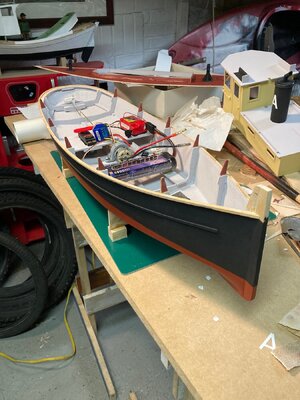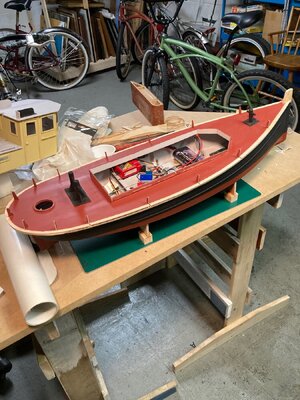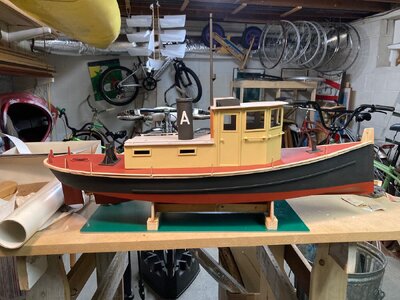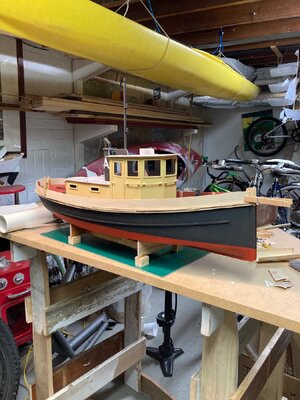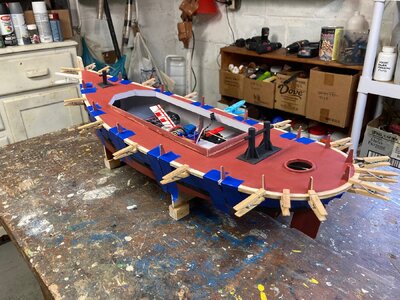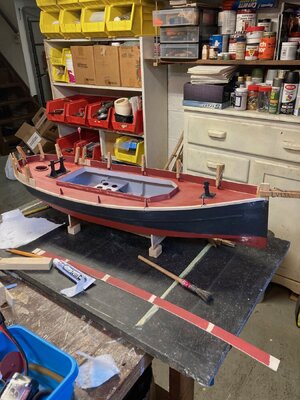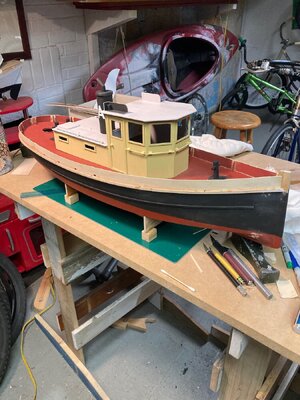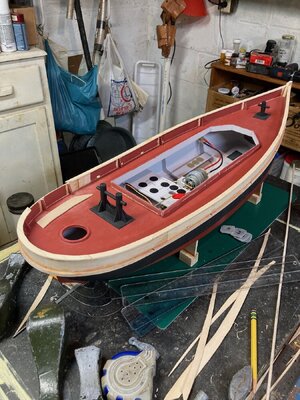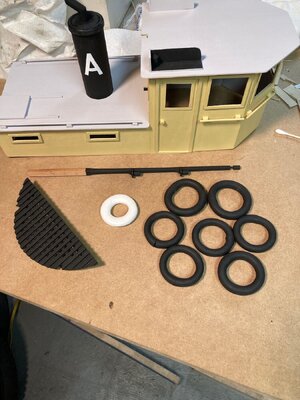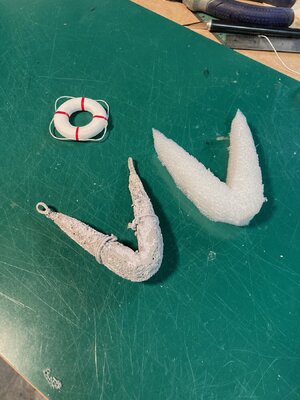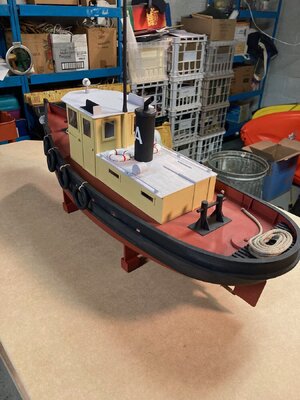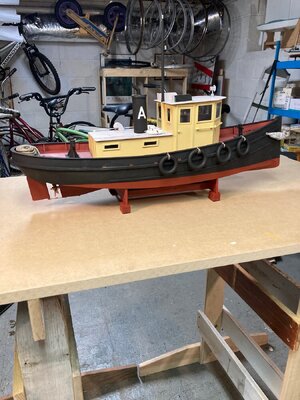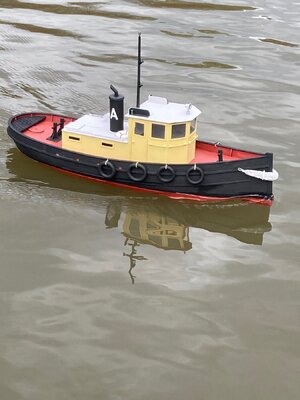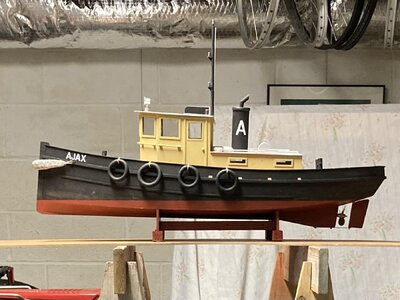This project is a bit different from many on this forum as it's a radio control boat, has significant departures from scale accuracy, and is a fictional craft. Still, it's a fair representation of a full-size boat that could be built and the work utilized some modeling techniques that may be useful to other modelers. It is based on plans for a "36' Fantail Skipjack Launch with Ram or Tumblehome-type Bow" as presented by Harry V. Sucher in his book "Simplified Boatbuilding: The V-Bottom Boat." Lines are shown below. I selected a scale of 3/4" = 1' to produce a convenient size for radio control boating.
The backbone is of 1/4" basswood. Frames of 1/8" plywood. Planking of 1/16" basswood. Frames were sawn out with integral extensions to the base line and attached to a baseboard. The plans show 11 stations. I made frames for even-numbered stations 2 through 10 plus station 11. After planking, the frames were sawn free. Photos show the framing of the fantail and the vertical staves, which pretty much mimics full-size construction. At the bow, I found the the bottom planking was not going to twist enough as it approached the stem, so I adopted a technique used by Chesapeake Bay boatbuilders: the chunk forefoot. Like it sounds, it's a chunk of wood carved to fill in the transition from the v-bottom planking to the vertical stem. Fastening was mostly with cyanoacrylate glue with some epoxy in places for reinforcement.
To be continued...
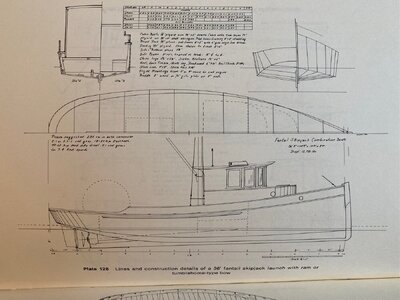
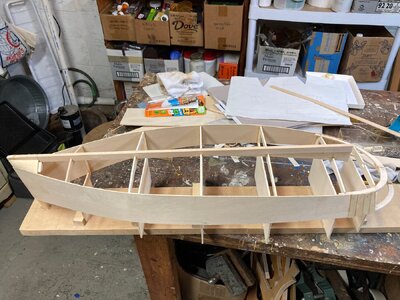
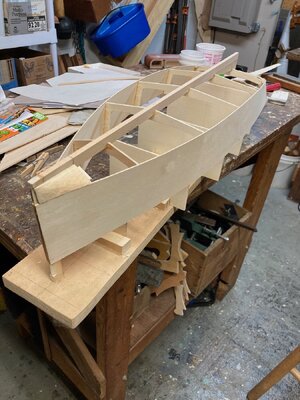
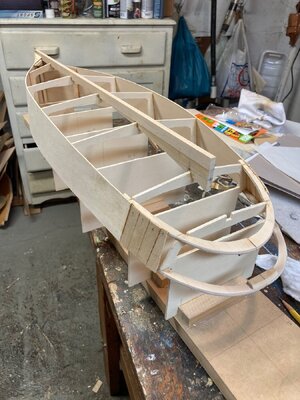
The backbone is of 1/4" basswood. Frames of 1/8" plywood. Planking of 1/16" basswood. Frames were sawn out with integral extensions to the base line and attached to a baseboard. The plans show 11 stations. I made frames for even-numbered stations 2 through 10 plus station 11. After planking, the frames were sawn free. Photos show the framing of the fantail and the vertical staves, which pretty much mimics full-size construction. At the bow, I found the the bottom planking was not going to twist enough as it approached the stem, so I adopted a technique used by Chesapeake Bay boatbuilders: the chunk forefoot. Like it sounds, it's a chunk of wood carved to fill in the transition from the v-bottom planking to the vertical stem. Fastening was mostly with cyanoacrylate glue with some epoxy in places for reinforcement.
To be continued...







